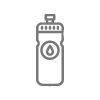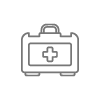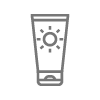




 trip overview
included
Trip Highlights
activities
accommodations
itinerary
packing list
faq
essential trip information
best season to travel
price & availability
reviews
Reserve Online
trip overview
included
Trip Highlights
activities
accommodations
itinerary
packing list
faq
essential trip information
best season to travel
price & availability
reviews
Reserve Online
 CREATING AUTHENTIC TOURS IN PERU
CREATING AUTHENTIC TOURS IN PERU

Palcoyo the new mountain of colors, the rainbow mountains in Palcoyo are a set of 03 mountains that are located in the Andes mountain range, resting in complete solitude, precisely in the Checacupe district of the province of Canchis in the department of Cusco at a height of 4900 meters above sea level.
The mountain of Palcoyo is composed of ocher and red colors, with green, blue and white stripes, the dazzling Palcoyo Color Range is visited by a few travelers a day. Reaching it only requires a gentle walk of 1 hour and without unevenness, transforming it into a less demanding alternative than the long trek to Vinicunca. During the stratospheric formation of the earth, the minerals falling by their own weight, formed layers one on top of the other and in the transformation of the earth with earthquakes and movements of tectonic plates.
The route to this impressive landscape will begin at approximately 4:00 in the morning, making an approximate journey of 2 hours and 30 minutes to the town of Cusipata where the corresponding food services will be provided. Then we will continue directly for an hour more passing through the town of Pitumarca to finally enter and shortly after arriving at the main attraction, the mountain ranges of colors, a fascinating spectacle, you will not have to do more of a walk, than that necessary to properly appreciate the landscape because the mobility reaches the same appeal in practice. After the reasonable time in the place, you will return on the same route, making the corresponding stop to have lunch.
You will arrive in the city of Cusco at 6:00 p.m.
Good hiking gear is always necessary and however easy the hike may seem. We must never underestimate and be confident because we do not know what can happen. Here are the recommendations, the essentials you should bring for when you go to the Palcoyo mountain.
 warm jackets
warm jackets
 Hydration bladder
Hydration bladder
 wool socks
wool socks
 camera
camera
 scarf
scarf
 first aid kit
first aid kit
 hiking shoes
hiking shoes
 Dry bags
Dry bags
 Trekking Poles
Trekking Poles
 sun cream
sun cream
 Snack
Snack
 sun hat
sun hat
 bathing suite
bathing suite
 rain coat
rain coat
 Sandals
Sandals
 insect repellent
insect repellent
 Passport
Passport
 Down Jackets
Down Jackets
 toilet paper
toilet paper
 daypack
daypack
 Wool cap
Wool cap
 head lamp
head lamp
 gloves
gloves
 sun glasses
sun glasses
 cap
cap
 extra cash
extra cash
 Trekking pants
Trekking pants
Before exploring the very famous mountain of colors Palcoyo, travel with the most correct information. And enjoy a day full of adventures in this mountain of colors, not very crowded, but with great natural attractions. If you have any question that is not in this list of questions, you can do it to our online chat, or to the mail.
When the number of visitors increased greatly to the mountain of 7 colors in 2017, it was when the residents of Palcoyo (an Andean community) realized that they also had an attraction that resembled the mountain of 7 colors. They had the red mountains of Palcoyo, which only they knew about.
They were organized internally. They understood the benefits that tourism activity brought. They began to promote and open the way to those red mountains, which are three in total and still as a plus it has its stone forest that completes the adornment of the landscape. This is how Palcoyo made himself known during 2018, he went throughout Peru and continued around the world. Thanks to its visitors who increasingly recommended as an alternative walk to the mountain of 7 colors.
Palcoyo Mountain is located a few kilometers further south from the famous Mountain of 7 Colors. In the same mountain range of Vilcanota in the District of Pitumarca province of Canchis, more than 110 km.
Palcoyo the mountain range of colors or the rainbow mountains are a set of 03 mountains that are located in the Andes mountain range, precisely in the district of Checacupe of the province of Canchis in the department of Cusco at a height of 4900 meters above the sea level, framed in almost 9000 hectares of beautiful Andean landscapes, whose attraction lies in the similarity it has to the already famous mountain of colors that is about 20 kilometers away, because like this it has a wide mineral composition that result in multiple colors that together resemble a rainbow whose background is a landscape of snowy mountain ranges to which it once belonged. This impressive attraction is also a gift from global warming, since it was within sight when it thawed.
As in the entire region, Palcoyo is governed by the two defined seasons that Cusco has, it is worth emphasizing that the rainy season is between the months of November and the first days of April, the remaining months between the last days of April and the last days of October, the whole region is in a dry and cold period. Thus, also taking into account the 4900 meters at which this place is located, it is normal to find a frozen landscape whose thermal sensation does not exceed 15 degrees even on one of the hottest days.
Very close to Palcoyo there is a small tributary of water that during the rainy season increases its flow, dragging with it the reddish earth of the land in which it is located, and with it this river takes on the same coloration that has attracted the attention of many visitors.
Now let’s see what can happen while it rains and snows in Palcoyo. Basically the water begins to bathe the slopes and red hills of those mountains and when they join in the lower part they give life to the red river. Anyone who enters the Palcoyo mountains upon seeing the red river will always stop and take a moment to look at all that beauty because it is nothing more than a must-see and rewarding option.
This coloration lasts according to the intensity of the rain, that is, the more it rains and the more water gathers on the slopes, it can last longer than when it is only moderate rains. Then the river when entering all that valley of Salqa that means indomitable valley, joins the large river of the same name. When mixed with a lot of water it tends to lose that red color that it shows while it is only a small river in the height.
On your own: If you do not have a vehicle, what you have to do is take a bus in the direction of Combapata, which you can take from the closed house of youth coliseum about 10 minutes from the historic center of Cusco, and after three hours of travel that you will make, when you arrive at the town you must hire a mobility that takes you to the same attraction that is, by a detour from the same town, almost an hour away, once there, make the walk of around 40 minutes and finally contemplate all the beautiful landscape in the relevant time, and return doing the same route until finally reaching the city of Cusco.
Remember that it is pertinent that you start your activity very early in the morning, around 4:30 in the morning. Do not forget to take dried fruit, cookies and water with you, it is very likely that the local food is not the best option.
With the services of a travel agency: With the services of a travel agency you can do this tour quietly, with all services included, there are many companies willing to provide you with the service, in our case we have the following itinerary.
The route that undertakes the journey in the direction of this impressive landscape will begin at approximately 4:00 in the morning, making an approximate journey of 2 hours and 30 minutes to the town of Cusipata where the corresponding food services will be provided. After the prudent time in the establishment, we will continue directly for one more hour passing through the town of Pitumarka to finally enter and shortly after arriving at the main attraction, the colored mountain ranges, a fascinating spectacle, you will not have to do more walking than necessary to properly appreciate the landscape as mobility comes in practice to the same attraction. After a reasonable time in the place, you will return on the same route, making the corresponding stop to have lunch.
The city will be reached by averaging 6:00 p.m.
To make a visit to Palcoyo either on your own or with a travel agency, follow the advice below.
A walk through the mountains of Palcoyo is ideal for everyone. This place is suitable for children and seniors for a family trip, proposing a walk through Palcoyo would be doing them a favor. It is known that the distance of the walk is less compared to the similar Mountain of 7 colors and therefore less demanding as well. So when you walk the first 30 minutes you will be able to see the three different colored mountains.
To be clear about this distance, in Palcoyo 4 km are covered. In two hours including stops while the mountain of 7 colors requires 6 hours for everything and about 7 km there and back. In case you were still looking for this difference that exists between the two now you already know.
The colors that make up the Palcoyo mountain are:
During the stratospheric formation of the earth, the minerals falling by their own weight, formed layers one on top of the other and in the transformation of the earth with earthquakes and movements of tectonic plates. The sedimentary layers in formation were turned into mountains and slopes, exposed to the elements and from there with the passage of time the oxidized minerals gave attractive color tones as seen today.
Knowing this is fundamental, the behavior of the climate in the area where the Palcoyo mountain is located. The snow seasons are generally in the rainy season, which is considered between November and April, but pay close attention to this. The weather is usually changeable at these heights of 4000 meters above sea level, which is why an extemporaneous and unexpected snowfall could occur anticipating November or passing the month of April. From now on we will see what happens when there is rain and snow in Palcoyo, which is not bad at all, but gives rise to a temporary attraction to be able to appreciate it, just join us.
Visiting the mountains of Palcoyo is also a great experience, of all the attractions that are in Cusco. Here you walk away from the crowds of tourists. Palcoyo is about three red mountains that are distributed a short distance from south to north. All visitors from the beginning of the walk go up a path in the same direction until they reach the viewpoint of the third mountain. From that point there is the possibility to continue walking towards the striking peaks of sharp rock, known as the stone forest and if not only to return by the same path.
If you want to get to the stone forest which is the highest point on this route, 4900 meters above sea level. You must follow the path that leads to it. The walk is partially light, only that to get to the stone forest requires a greater effort, but it is not far, everything is possible. From the top you can see the three mountains together and you have a 360 ° view. If the day is clear, the snowy Ausangate will appear in the distance. So the experience of being in a quiet and serene place is the best. What you will find is the presence of local people dressed in Andean costume with one or two alpacas. If anyone dares to take a picture with them, they can ask for it and in return a small tip.
For some, the presence of the alpacas and their beauty, plus the elegant landscape suggests that it is a small paradise. The llamas (lama glama) but mainly the alpacas (vicugna pacos) are the ones that inhabit this area in greater numbers. It is not that they live their wild life, but they are raised by the locals and serves as a livelihood for them. There are also foxes (dusicyon culpaeus) and chinchillas that appear very rarely and birds, such as the Cara Cara (phalcoboenus megalopteros) Huallatas (chloephaga melanoptera) Etc. And speaking of vegetation in Palcoyo and surroundings it can be mentioned about the abundant wild straw (stipa ichu) and grasslands that are food for camelids, also some cacti and all kinds of herbs that grow at ground level.
Want an in-depth insight into this trip? Essential Trip Information provides everything you need to know about this adventure and more.
View Essential Trip InformationThe best time to visit Peru is during the dry season, between May and November, when the weather is dry and bright, with more frequent rainfall occurring between November and April.
 JANUARY
JANUARY
 FEBUARY
FEBUARY
 MARCH
MARCH
 APRIL
APRIL
 MAY
MAY
 JUNE
JUNE
 JULY
JULY
 AUGUST
AUGUST
 SEPTEMBER
SEPTEMBER
 OCTOBER
OCTOBER
 NOVEMBER
NOVEMBER
 DECEMBER
DECEMBER
To book this tour, a minimum of $ 49 USD per person is required, the remaining balance will be paid upon arrival in Peru, at the Cusco office.
Any other additional information, please coordinate with your travel agent.




Nothing gets you closer to a country than walking through it, and we’ve got trips to suit walkers of all levels and interests.

All our Walking trips are graded from ‘Easy’ through to ‘Challenging to Tough’. On our online trip itineraries you’ll find a chart showing the daily walk distances, timings and information on the route including the terrain, altitude. Generally, no specific training is needed but you might feel more comfortable if you’ve got out walking a few times in the lead-up to your trip.

As with all our trips, every group is different but the ‘average’ group consists of roughly half couples and half solo travellers – all sharing a passion for exploring the world on foot. You’ll always have someone to keep you company along the route, but you don’t always have to walk together. Wherever possible your Andean Great Treks leader will allow everyone to walk at their own pace, regrouping regularly along the route.

Like many other countries in developing destinations, the region’s beauty and uniqueness are countered by inequality and lack of investment. This has led to crime rates (mainly theft and scams) not being uncommon in the larger cities. We know this doesn’t sound very attractive, but it’s important to mention it regardless. Most experienced and well-traveled visitors will understand this well and not be too concerned. However, having said this, it is our duty to take care of you during your visit. That’s why we present you here with a few recommendations to be extra safe. Avoid walking alone at night on empty streets. Don’t flaunt valuables! If going for a walk or going on public transport, be sensible and avoid showing off expensive items such as expensive watches and jewelry. Be careful of pickpockets! Don’t leave your bags anywhere that doesn’t look safe, and make sure to take them with you.

Soroche, or mountain sickness, is a reality for most people arriving in Cusco by plane from sea level and needs to be treated with respect. It’s vital to take it easy, not eating or drinking much on arrival, even sleeping a whole day just to assist acclimatization (coca tea is a good local remedy). After three days at this height most people have adjusted sufficiently to tackle moderate hikes at similar or lesser altitudes. Anyone considering hiking the major mountains around Cusco will need time to adjust again to their higher base camps.
If you do encounter altitude-related health problems, many hotels and restaurants have oxygen cylinders to help; alternatively, for serious cases, try call any of the clinics that are in Cusco, most of them have staff that speak English, for a greater facility in your attention it is recommended to have a travel insurance that covers medical expenses.
International flights to the capital city of Lima are plentiful but once there, you need to find a way to Cusco which is about 1100 km (684 miles) away. The quickest way to get to Cusco from Lima is to fly – it takes about 55 minutes. I don’t recommend traveling by bus because it takes about 24 hours – only do it if you intend to break the journey along the way, to visit other places.
Renting a car to travel from Lima to Cusco is not recommended. The roads are rough, and you could find yourself lost or face to face with one of the other dangers that come with traveling in unfamiliar territory.
The easiest way to explore the Sacred Valley from Cusco is on a guided full day tour that picks you up and drops you off from your hotel. The market in Pisac and Inca ruins in Ollantaytambo are the principal stops, though travelers with more time on their hands will find plenty more to see and do. It’s also possible to take a local bus or taxi into the Sacred Valley and do independent exploration.
Rainbow Mountain, or Vinicunca as it’s known by locals, has become a popular hike in the Cusco region. It’s possible to visit Rainbow Mountain in one (very long) day from Cusco or you can divide the trip into a two-day itinerary. While the hike isn’t very difficult and doesn’t have many steep inclines, Vinicunca is in a high elevation region (the highest part of the trail is 17,060 ft or 5,200 m) and you should spend time acclimating before starting the hike.
We are not afraid to say that Cusco is a place where every traveler ends up at least once during the trip around Peru, and it is hard to tell what is the right length of stay.
If your primary reason why to visit Cusco is to get to Machu Picchu, you still should spend here at least two days to acclimatize (despite the fact Machu Picchu is at a lower elevation than Cusco, some people still suffer from altitude sickness), and during this time you can explore the city and Sacred Valley.
From our personal experience, we think that the longer you can stay in Cusco it is better. Some travelers with limited time even revolve their entire itinerary around Cusco – this only proves how rich the city is in terms of sightseeing, architecture, and activities.
Cusco has so many things to see and do, not only within the city limits but mostly outside, that it is not a problem to spend here weeks. If you are flexible, sit down, and write down all one-day and multi-day treks you would like to do from Cusco, and you should get the optimal number of days for you.
There are so many things to see and do in Cusco and its surroundings that the city certainly deserves more than one day of your time.
To enjoy your days in Cusco the most, it is essential to choose the right accommodation. The good news is that Cusco has a great network of hotels for every type of traveler, from cheap hostels to luxurious mansions. That’s why your only job is to find a hotel in a location that suits you the best.
We recommend staying close to Centro Historico unless you want to stay away from crowds. We’ve selected the three best hotels in Cusco, so feel free to get inspired.
In recent years, Peruvian cuisine has gained popularity in the world’s culinary landscape, but for the freshest (and most authentic) specialty dishes, Cusco will not disappoint. Most Peruvian dishes carry big flavor not seen in other Latin and South American fare. You may have already tried popular dishes like ceviche (a cold dish of fresh raw fish with spicy citrus flavors) or lomo saltado (stir fried beef with fries). If you’re feeling a bit more adventurous, try Cuy (roasted guinea pig – yes, the American household pet) or charbroiled alpaca (also known as llama). Other delicious traditional dishes include adobo (a pork stew with corn beer), tamales, choclo con queso (boiled corn with local cheese) and the vegetarian stew capchi de setas. As far as vegetables go, Peru produces more than 4,000 varieties of potato, so you’ll find many dishes centered on them like papas a la huancaina (boiled potatoes with a spicy cheese sauce) and causa (a potato casserole with a variety of meat). Other staple veggies include corn and avocados. If your mouth isn’t watering yet, check your pulse.
For a taste of traditional dishes, head to PACHAPAPA or the award-winning CHICHA (visitors and locals recommend getting reservations well in advance). Peruvian cuisine often mingles with Asian influences, inspired by the culture brought by indentured servants and immigrants who came to Peru dating back to the original Spanish rule in the country. For a sampling of the Asian/Peruvian fusion cuisine, visit LIMO. If you’re really looking to splurge on a fine dining experience, try MAP Cafe. Located in the courtyard of the Pre-Columbian Art Museum in a glass shipping container, the fare is more contemporary Peruvian cuisine. You can also kick-start your day with coffee and breakfast at Jack’s Cafe, which serves breakfast all day. Many of the most popular restaurants are centrally located near Plaza de Armas.

Every Andean Great Treks holiday has been thoughtfully planned and crafted by our specialists. They draw on their own extensive travel experience and the guidance and expertise of our local partners to create superb holidays. Our specialists are committed to making every aspect smooth and enjoyable; they genuinely want to ensure that the holidays they create leave you with wonderful lasting memories.
Every Andean Great Treks traveller is accompanied by an experienced tour guide, you will be immersed in Historic cities, ancient ruins and unfamiliar landscapes are all brought to life by our carefully selected local guides. They want to share their expertise and help you make your own discoveries too; their sole mission is to ensure you enjoy every moment.
Giving you the freedom to make your holiday even more memorable. We know how much our customers look forward to their holiday and we pride ourselves on the choice and flexibility that we offer to enhance every aspect of your experience. Whether it’s getting to the airport, upgrading your room or booking an additional excursion, we can help.

Our guides are the stars of the show; it is their unrivalled knowledge, passion and expertise that will transform your tour experience from good to truly extraordinary!
Because the have grown up in the area and know it like the back of their hand, so they can help you experience whichever aspects most interest you. They’re passionate about sharing their corner of the world with you, and as you explore together, they’ll open your eyes to the intricate details, provide background to enhance your understanding of what you’re seeing, and share stories that will bring everything to life.

“Your inspiration for a trip can be a single word or a highly evolved outline, but it’s the conversations we have that help us understand the experience you’re looking for. Meanwhile, I’m looking back on the time I spent at the destination.
‘The great thing about working with a specialist at Andean Great Treks is how they take your complete jumble of ideas and turn them into something absolutely spectacular.’
As you begin to share your ideas with your specialist, it will connect them immediately back to a time in their own travels. Conjuring a picture of the rest time they made that same discovery, reminding them how it felt.
Your specialist understands that, when the journey is right, it has the power to excite your emotions in the most profound ways after all, that was the effect on them.
They carry a treasure box of moments, captured over many journeys, into every suggestion they’ll share with you, as they ask you how you want to feel on your trip.

EXPERIENCES THAT CALL TO YOU
It’s what you do in a destination that helps bring it to life. It’s why we strive to choose experiences that help you connect to a place, absorbing a little of its complex character. Wherever your passions lie, we’ll recommend experiences that speak to you, and we’ll recommend the guide or local expert who’s most qualified to help you explore. Packing your holiday full of special experiences means some early starts and long days, but you can be sure that you’ll return home with many incredible memories! Read our Tours and check the Physical Ratings to see if the pace and activity levels are right for you.

STAYS WITH DIFFERENCE
We know that where you stay is a cherished part of your travels. So, we go to great lengths to find places to stay that exceed expectations, or go above and beyond the ordinary, whether in their character, hospitality, or location. Over the years, we’ve discovered the very best properties, trying and testing them, so we can choose the right one for you. We’ve nourished long-standing relationships with these establishments and the people who founded them, and we’ve stayed there many times often, we’ll even know which rooms have the best views (and reserve them for you).

Our style of travel — authentic, thoughtful, and focused on building meaningful connections to the people and places you visit — is inherently respectful and considerate of the destinations we love. We design each aspect of your trip exactly as you want it, which includes its sustainability. That might mean choosing a train journey instead of a flight, staying at eco-friendly wildlife lodges, or opting for experiences that give back to the communities you’re visiting. The choice is yours.
Responsible travel has always been at the heart of what we do. First and foremost, because it gives you the best experience, but, also because it helps to preserve the communities and landscapes you visit. This isn’t new for us we collaborated with local communities and outside experts so we can grow to be better ambassadors.
The most authentic and interesting experiences often directly benefit the local people. We prefer to buy local products that are produced in the organic farms of the Sacred Valley, we also have alliances with local artisan organizations who provide us with souvenir items for our clients, your money directly benefits the local economy.
Our style of travel — authentic, thoughtful, and focused on building meaningful connections to the people and places you visit — is inherently respectful and considerate of the destinations we love. We design each aspect of your trip exactly as you want it, which includes its sustainability. That might mean choosing a train journey instead of a flight, staying at eco-friendly wildlife lodges, or opting for experiences that give back to the communities you’re visiting. The choice is yours.
Responsible travel has always been at the heart of what we do. First and foremost, because it gives you the best experience, but, also because it helps to preserve the communities and landscapes you visit. This isn’t new for us we collaborated with local communities and outside experts so we can grow to be better ambassadors.
The most authentic and interesting experiences often directly benefit the local people. We prefer to buy local products that are produced in the organic farms of the Sacred Valley, we also have alliances with local artisan organizations who provide us with souvenir items for our clients, your money directly benefits the local economy.

‘There’s a saying: we don’t inherit the Earth from our ancestors, we borrow it from our children. When we show you our country, this philosophy guides everything we do. It’s our responsibility to preserve the environment and wildlife, and support communities. That means using slower modes of transport, like cycling, employing local people, and working with communities who’ll benefit directly from your visit. This also gives you the best, most authentic impression of the places we want to share with you.
We prefer to buy local products in ecological bags, to avoid the use of plastic bags, likewise we teach the use of soaps and ecological products in each tour that we organize. We also work on reforestation projects with local communities who take care of landscape resources such as communal reserves, national parks.
‘There’s a saying: we don’t inherit the Earth from our ancestors, we borrow it from our children. When we show you our country, this philosophy guides everything we do. It’s our responsibility to preserve the environment and wildlife, and support communities. That means using slower modes of transport, like cycling, employing local people, and working with communities who’ll benefit directly from your visit. This also gives you the best, most authentic impression of the places we want to share with you.
We prefer to buy local products in ecological bags, to avoid the use of plastic bags, likewise we teach the use of soaps and ecological products in each tour that we organize. We also work on reforestation projects with local communities who take care of landscape resources such as communal reserves, national parks.

Explore the beautiful South Valley of Cusco, this circuit offers you to appreciate the hydraulic technology of the Incas, the ancient city of the Wari culture. The majestic Sistine Chapel of Andahuaylillas, in a half day tour with the best guides in Cusco.


Cusco, the former capital of the Inca Empire, is one of the most fascinating cities in South America. Just walking through the city center you can see the incredible mix of Inca and colonial architecture, watch the merging of indigenous and Spanish influences, and feel the history that flows through every cobblestone street.


Explore the Vinicunca rainbow mountain tour, walk through the most beautiful mountains in Peru, surrounded by large snow-capped mountains, and herds of alpacas. Enjoy great views of the Red Valley, which will give you a feeling of being on the planet Mars.